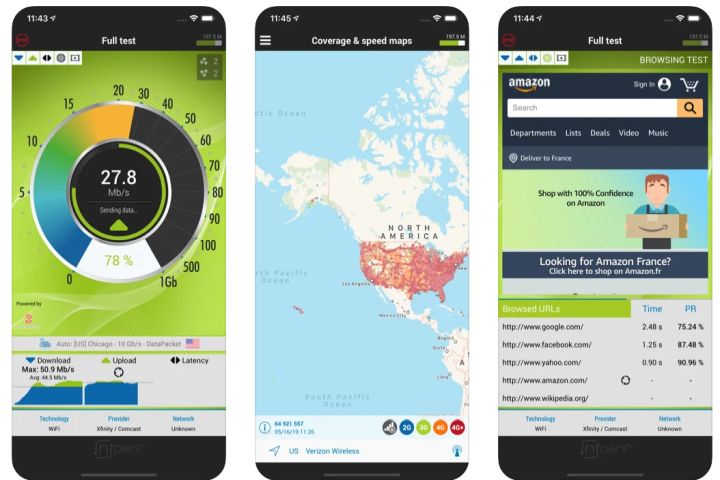So you’ve picked up one of the best 5G phones (or one of the cheapest 5G phones), and you’re ready to give this whole 5G thing a whirl. Except, well, how do you know you’re getting the full benefit of 5G? Sure, the little “5G” symbol pops up sometimes, but what’s the actual impact of that? Are you really getting your faster 5G speeds? Or, if you live outside of a 5G area, where should you go to experience the next big mobile network?
Whether you’re after a tool to put your new 5G connection to the test or a map that shows you where to go to access your 5G network coverage, here’s a list of the best apps to test your 5G connection on Android and iOS.
Meteor by OpenSignal
There are a lot of great speed-testing apps out there, but OpenSignal’s Meteor is very much one of the best. The fun, frivolous theme has a suite of powerful tools backing it up. Testing is simple — tap the button, and off it goes. At the end, you’ll be served your download, upload, and ping speeds, but most importantly, it’ll also give you a breakdown of how your 5G connection will function in a variety of apps, including YouTube, Slack, and Netflix. You can take tests in different locations and compare your speeds in the Maps sub-menu. The map only shows your connection speeds, and there’s no breakdown of where you’ll find
Speedtest by Ookla
The quintessential speed tester, and probably the one you’ve used if you’ve ever searched for a speed test online, Speedtest by Ookla also has a solid app. It’s easy to test — just press the button to get going. But the more interesting elements of this app come after you’ve tested. Give the app permission to access your location data more often, and you’ll help contribute to a massive map of data. Access the Map sub-menu, and you’ll be able to see where you can access 5G, LTE, and other connections on different networks. This is especially handy if you want to try out your new
Nperf Speed Test

This is definitely the fanciest-looking app, and it looks like something NASA might use in movies. But it’s not all brawn and no brains, as Nperf’s testing regime is a pretty strong one. Not only will it test your up and down speeds, but it’ll also access a variety of websites and stream video to really put your connection to the test. You’ll get your results in the usual up/down/ping stats, but you’ll also get a score out of 100 on your connection’s browsing and streaming strengths. As such, it’s an exceptionally full toolkit, even without mentioning the data that allows you to see where 5G and LTE connections are near you, with different maps for different carriers. An excellent alternative to the usual suspects above.
Network Analyzer
If you’d like more of a deep-dive into your connection stats, then look no further than Network Analyzer. Available for both iOS and Android, it provides all the information you could possibly need. You’ll be able to see your signal strength, your various addresses, connection type, and more. There’s also a tool for pinging websites, so you can see your ping strength in real time. Definitely one for the boffins, though, as it’ll leave the rest of us scratching our heads at what all this information means. This is the lite version of the tool, and the Pro version with all the toys will set you back $4.
Cell Tower Locator
If you really want to get in-depth about which cell tower you’re connected to, then check out Cell Tower Locator. It’ll need a couple of permissions to work, but once it’s running, it’ll jump to the map and show you exactly where your nearest tower is and how far away you are, to a fairly high degree of accuracy. It’s of limited use unless you’re getting into the nitty-gritty of network tests, but it’s fun to know anyway. Unfortunately, this is only available on Android, as iOS doesn’t support tools like these.














